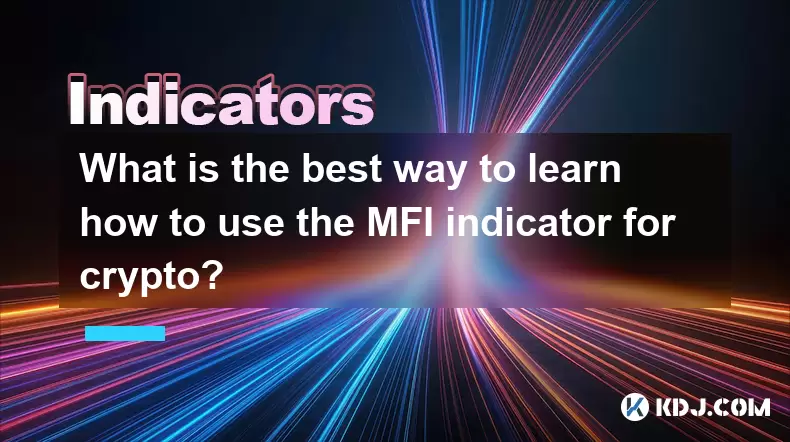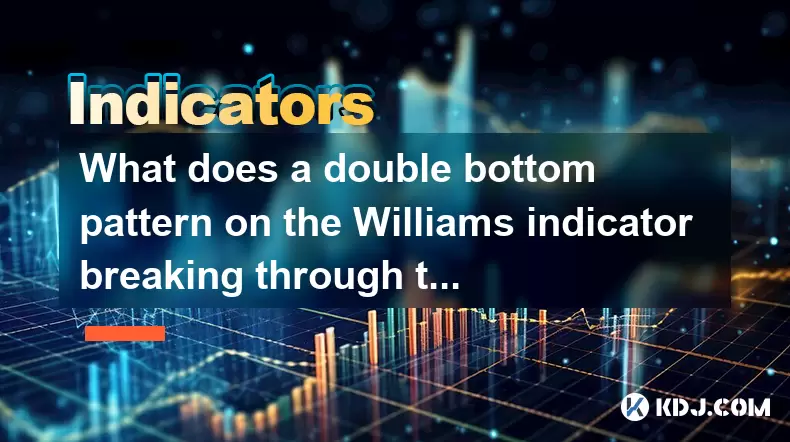-
 Bitcoin
Bitcoin $116400
-0.36% -
 Ethereum
Ethereum $4033
3.40% -
 XRP
XRP $3.302
-1.26% -
 Tether USDt
Tether USDt $1.000
-0.02% -
 BNB
BNB $796.1
1.67% -
 Solana
Solana $177.8
1.89% -
 USDC
USDC $0.9999
0.00% -
 Dogecoin
Dogecoin $0.2314
4.09% -
 TRON
TRON $0.3381
0.14% -
 Cardano
Cardano $0.7989
1.22% -
 Stellar
Stellar $0.4496
-1.84% -
 Chainlink
Chainlink $20.42
9.42% -
 Hyperliquid
Hyperliquid $41.17
0.88% -
 Sui
Sui $3.914
3.77% -
 Bitcoin Cash
Bitcoin Cash $584.7
1.52% -
 Hedera
Hedera $0.2632
-0.54% -
 Avalanche
Avalanche $24.09
3.40% -
 Ethena USDe
Ethena USDe $1.001
-0.02% -
 Litecoin
Litecoin $123.2
1.33% -
 Toncoin
Toncoin $3.318
-0.04% -
 UNUS SED LEO
UNUS SED LEO $8.984
-0.05% -
 Shiba Inu
Shiba Inu $0.00001323
2.85% -
 Uniswap
Uniswap $10.90
4.41% -
 Polkadot
Polkadot $3.999
3.34% -
 Dai
Dai $1.000
0.01% -
 Cronos
Cronos $0.1630
9.64% -
 Bitget Token
Bitget Token $4.484
0.82% -
 Monero
Monero $272.4
2.44% -
 Pepe
Pepe $0.00001173
6.03% -
 Aave
Aave $290.8
2.88%
What is the best way to learn how to use the MFI indicator for crypto?
The Money Flow Index (MFI) combines price and volume to identify overbought (>70) and oversold (<30) levels in crypto, helping spot reversals and divergences.
Aug 06, 2025 at 01:00 am

Understanding the MFI Indicator in Cryptocurrency Trading
The Money Flow Index (MFI) is a technical analysis oscillator that measures the flow of money into and out of a cryptocurrency asset over a specified period, typically 14 days. It combines price and volume data to assess buying and selling pressure. The MFI ranges from 0 to 100, with readings above 70 considered overbought and below 30 deemed oversold. This makes it a valuable tool for identifying potential reversals in crypto price trends. Unlike the RSI, which only uses price, the MFI incorporates volume, offering a more comprehensive view of market momentum.
Cryptocurrencies are highly volatile, making volume-based indicators like the MFI especially useful. When a coin’s price rises on high volume, it signals strong conviction behind the move. Conversely, price increases on low volume may indicate weak momentum. By analyzing these dynamics, traders can make more informed decisions about entry and exit points.
Setting Up the MFI Indicator on Trading Platforms
Most major cryptocurrency trading platforms support the MFI indicator, including TradingView, Binance, and Coinbase Advanced Trade. To add the MFI:
- Navigate to the chart of your chosen cryptocurrency.
- Click on the “Indicators” button, usually located at the top of the chart interface.
- Search for “Money Flow Index” in the indicator library.
- Select the MFI and apply it to the chart.
- Adjust the period setting if needed—default is 14, but some traders use 9 or 21 for more sensitivity.
On TradingView, users can customize the overbought and oversold levels by editing the script settings. This allows traders to set alerts when the MFI crosses key thresholds. Ensure the volume data is enabled on the chart, as MFI relies on accurate volume inputs. For spot markets, this is straightforward, but for futures, confirm that the volume reflects the correct contract type.
Interpreting MFI Signals in Crypto Markets
The primary use of the MFI is to detect overbought and oversold conditions. When the MFI climbs above 70, it suggests the asset may be overbought, indicating a potential pullback or reversal. Conversely, when it drops below 30, the asset may be oversold, signaling a possible upward correction.
Another powerful signal is divergence. A bearish divergence occurs when the price makes a higher high, but the MFI makes a lower high—this warns of weakening momentum and a likely downturn. A bullish divergence happens when the price hits a lower low, but the MFI forms a higher low, suggesting accumulation and a potential upward move.
For example, if Bitcoin rises to $70,000 while the MFI fails to surpass 65 and begins to decline, this bearish divergence could precede a price drop. Traders often wait for confirmation, such as a candlestick pattern or a break of support, before acting.
Combining MFI with Other Technical Tools
Using the MFI in isolation can lead to false signals, especially in strong trending markets. Combining it with other indicators enhances accuracy. Pairing MFI with moving averages helps identify the overall trend. If the price is above the 50-day or 200-day moving average and the MFI exits oversold territory, it may confirm a bullish setup.
Another effective combination is MFI with Bollinger Bands. When price touches the lower band and the MFI is below 30, it strengthens the case for a bounce. Similarly, price at the upper band with MFI above 70 may suggest a short opportunity.
Volume profile tools can also validate MFI readings. If MFI shows overbought conditions and volume is declining at resistance, it reinforces the likelihood of rejection. Conversely, rising volume during an oversold bounce increases confidence in a reversal.
Practical Learning Steps for Mastering MFI in Crypto
To effectively learn the MFI, start with paper trading or demo accounts. Most platforms offer simulated trading environments where you can apply MFI strategies without risking capital. Begin by observing how MFI behaves across different timeframes—1-hour, 4-hour, and daily charts.
- Open a demo account on TradingView or Binance.
- Apply the MFI to various cryptocurrencies like Bitcoin, Ethereum, or Solana.
- Track at least 20 historical setups where MFI crossed 30 or 70.
- Record whether price reversed or continued, noting volume and trend context.
- Test divergence strategies by identifying at least 10 past divergence events and their outcomes.
Backtesting helps internalize patterns. Use candlestick patterns like hammers or shooting stars as confirmation signals when MFI reaches extreme levels. Over time, this builds intuition for real-market applications.
Common Mistakes and How to Avoid Them
A frequent error is acting on MFI signals without considering the broader trend. In a strong uptrend, MFI can remain above 70 for extended periods—this doesn’t mean immediate reversal. Similarly, in a downtrend, MFI may stay below 30, reflecting sustained selling pressure.
Another pitfall is ignoring low-volume periods, such as weekends or holidays, when MFI readings can be misleading. Always check if volume is representative of normal market activity.
Avoid using MFI on assets with low liquidity. Cryptocurrencies with thin order books or minimal trading volume produce erratic MFI values. Stick to major coins and high-volume altcoins for reliable signals.
Frequently Asked Questions
What is the ideal MFI period setting for crypto trading?
The standard 14-period MFI works well for most traders. However, shorter periods like 9 increase sensitivity and are useful for day trading volatile altcoins. Longer periods like 21 reduce noise and suit swing traders. Adjust based on your strategy and timeframe.
Can MFI be used on futures and perpetual contracts?
Yes, MFI applies to futures if volume data is accurate. Ensure the chart reflects real trading volume for the specific contract. Some platforms aggregate volume across expiries, which may distort readings. Use isolated margin or specific contract charts for precision.
How does MFI differ from RSI in crypto analysis?
While both are momentum oscillators, MFI includes volume, making it more robust in detecting true strength or weakness. RSI only uses price, so it may generate false signals during low-volume rallies. MFI confirms momentum with volume, offering higher reliability in volatile crypto markets.
Is MFI effective during major news events?
MFI can be less reliable during sudden news-driven spikes, as volume surges distort readings. For example, a major exchange listing may cause MFI to spike above 80 without immediate reversal. In such cases, wait for stabilization and use MFI after the initial volatility subsides.
Disclaimer:info@kdj.com
The information provided is not trading advice. kdj.com does not assume any responsibility for any investments made based on the information provided in this article. Cryptocurrencies are highly volatile and it is highly recommended that you invest with caution after thorough research!
If you believe that the content used on this website infringes your copyright, please contact us immediately (info@kdj.com) and we will delete it promptly.
- Moat Stocks & Mega-Cap Momentum: July's Standout Performance
- 2025-08-09 12:30:12
- Injective (INJ) Eyes $15.39 Breakout Amidst Explosive Network Growth
- 2025-08-09 12:30:12
- Ripple vs. SEC: XRP Price Soars as Legal Battles End, But Can It Outpace Rising Competitors?
- 2025-08-09 13:10:12
- DWP Management, XRP, and Digital Asset Funds: A New Era for Institutional Investment?
- 2025-08-09 13:30:12
- Pi Network's KYB Verification: A Leap Towards Sustainable Token Launch
- 2025-08-09 13:30:12
- Bitcoin, Dollar Alternative, and Institutional Adoption: A New Era?
- 2025-08-09 13:35:12
Related knowledge

What does it mean when the Triple Moving Average (TRIX) turns downward but the price doesn't fall?
Aug 09,2025 at 12:42pm
Understanding the Triple Moving Average (TRIX) IndicatorThe Triple Moving Average, commonly known as TRIX, is a momentum oscillator designed to filter...

What does it mean when the Williams' oscillator repeatedly hits bottoms but fails to rebound?
Aug 09,2025 at 09:28am
Understanding the Williams %R OscillatorThe Williams %R oscillator, developed by Larry Williams, is a momentum indicator used in technical analysis to...

What does a double bottom pattern on the Williams indicator breaking through the 50-day midline indicate?
Aug 09,2025 at 10:56am
Understanding the Williams %R IndicatorThe Williams %R indicator, developed by Larry Williams, is a momentum oscillator that measures overbought and o...

What does it mean when the MACD-histogram turns from green to red but the DIF line fails to form a golden cross?
Aug 09,2025 at 10:15am
Understanding the MACD and Its ComponentsThe MACD (Moving Average Convergence Divergence) is a widely used technical analysis tool in the cryptocurren...

When the J line in the KDJ indicator suddenly turns downward after being continuously overbought, does it indicate a top?
Aug 09,2025 at 06:35am
Understanding the KDJ Indicator and Its ComponentsThe KDJ indicator is a momentum oscillator widely used in cryptocurrency technical analysis to ident...

What does it mean when the TRIX indicator suddenly diverges downward after a long period of convergence?
Aug 09,2025 at 12:56am
Understanding the TRIX Indicator in Cryptocurrency TradingThe TRIX indicator, or Triple Exponential Average, is a momentum oscillator used in technica...

What does it mean when the Triple Moving Average (TRIX) turns downward but the price doesn't fall?
Aug 09,2025 at 12:42pm
Understanding the Triple Moving Average (TRIX) IndicatorThe Triple Moving Average, commonly known as TRIX, is a momentum oscillator designed to filter...

What does it mean when the Williams' oscillator repeatedly hits bottoms but fails to rebound?
Aug 09,2025 at 09:28am
Understanding the Williams %R OscillatorThe Williams %R oscillator, developed by Larry Williams, is a momentum indicator used in technical analysis to...

What does a double bottom pattern on the Williams indicator breaking through the 50-day midline indicate?
Aug 09,2025 at 10:56am
Understanding the Williams %R IndicatorThe Williams %R indicator, developed by Larry Williams, is a momentum oscillator that measures overbought and o...

What does it mean when the MACD-histogram turns from green to red but the DIF line fails to form a golden cross?
Aug 09,2025 at 10:15am
Understanding the MACD and Its ComponentsThe MACD (Moving Average Convergence Divergence) is a widely used technical analysis tool in the cryptocurren...

When the J line in the KDJ indicator suddenly turns downward after being continuously overbought, does it indicate a top?
Aug 09,2025 at 06:35am
Understanding the KDJ Indicator and Its ComponentsThe KDJ indicator is a momentum oscillator widely used in cryptocurrency technical analysis to ident...

What does it mean when the TRIX indicator suddenly diverges downward after a long period of convergence?
Aug 09,2025 at 12:56am
Understanding the TRIX Indicator in Cryptocurrency TradingThe TRIX indicator, or Triple Exponential Average, is a momentum oscillator used in technica...
See all articles

























































































